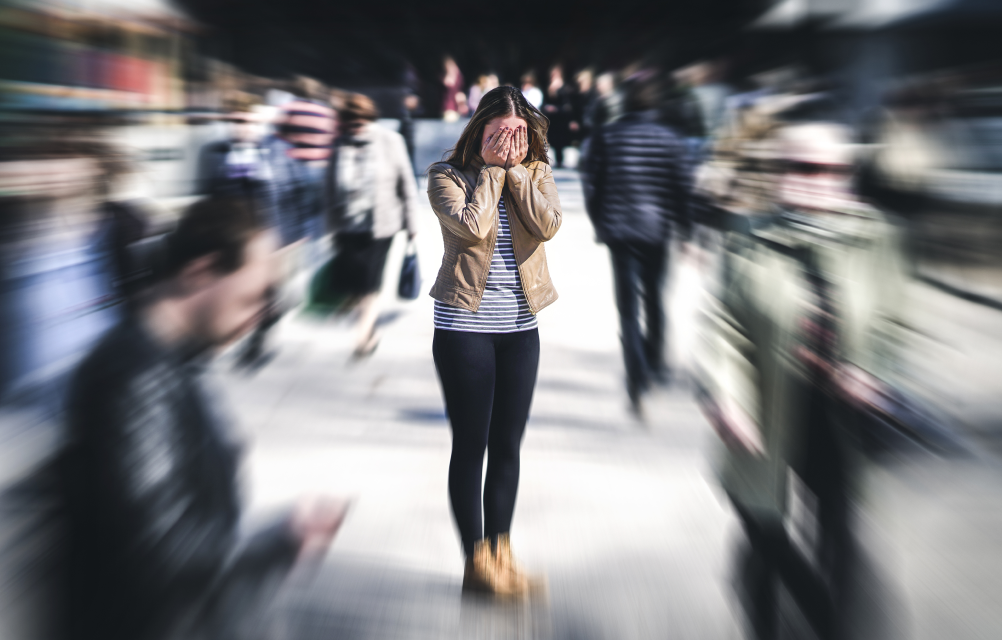Panic Attacks and How to Cope
Panic attacks are terrifying and can seriously interfere with daily activities and quality of life. If you've ever had a panic attack, you know the intense feelings that completely overwhelm your body and brain. In this post, we'll discuss what panic attacks are, how they work, and give you some tips and tricks for both treatment and prevention of these upsetting episodes. While panic attacks are extremely unpleasant, they are both treatable and often preventable. Learning more about how panic attacks happen and what to do to manage them can be useful in preventing these incidents from disrupting life more than necessary. We'll outline some strategies to help understand the attacks, reduce the unpleasant symptoms, and regain control over these disruptive episodes.
We’ve all had the experience of feeling anxious at times and probably even feeling panicked. Recall for a moment what that feels like in your body- heart racing, palms sweating, dry mouth, your whole body on "high alert." This activation of a particular branch of our nervous system is an evolutionary advantage, commonly called “fight or flight” and helps to ramp up the body's defenses when faced with danger. There are times where this state of alertness serves us well- like when there is a threat to our lives or when we are faced with an imminent attack. For some people, however, the activation of fight or flight system gets out of whack, and the result can be an overwhelming bodily response that is not commensurate with the situation at hand. These incidents are called panic attacks. One of the hallmark signs of a panic attack is that is doesn't necessarily come about in a threatening situation, though it might. Some people have panic attacks seemingly out of the blue; some have reported even having them while sleeping!
Panic attacks come on suddenly and may recur. Some people only have one panic attack in their lifetimes, and others suffer from repeated attacks in what is known as Panic Disorder. Recurrent panic attacks are often triggered in a particular situation or environment. Panic attacks may occur in people that have no history of other mental health problems, or they might be part of another disorder such as anxiety, social phobia, or depression. They tend to run in families, suggesting a genetic component and typically emerge in teen years or early adulthood. Interestingly, women are twice as likely to suffer from panic disorder than men. Panic Disorder is relatively common, affecting as many as one in 75 people.
Some people who experience panic attacks report that they feel like they are literally dying. An immensely strong wave of both physiological and psychological sensations overtakes them, and they find themselves debilitated, completely immobilized by the intensity of the episodes. The following are common symptoms of panic attacks:
Shortness of breath or hyperventilation
Heart palpitations or racing heart
Chest pain or discomfort
Trembling or shaking
Choking feeling
Feeling unreal or detached from your surroundings
Sweating
Nausea or upset stomach
Feeling dizzy, light-headed or faint
Numbness or tingling sensations
Hot or cold flashes
Fear of dying, losing control or going crazy
There are many lifestyle changes you can make to help reduce the likelihood of panic attacks, and most of these changes are common sense tips that make for good health regardless of if you are suffering from panic attacks:
1. Learn about panic attacks and how anxiety manifests itself physically. The references listed here are a great place to start. Sometimes understanding how and why panic attacks occur can really help to reframe the disorder and take some of the fear out of the experience.
2. Avoid smoking, alcohol, and caffeine. These drugs can be harmful to anyone but particularly for people who suffer from panic attacks. Also, avoid any stimulants such as those sometimes found in cold medication as they can provoke attacks.
3. Learn how to control your breathing and practice mindfulness and meditation. Try taking a yoga class or downloading a mindfulness or meditation app. Controlled deep breathing can directly and instantly counteract the overwhelming physical symptoms of a panic attack. The more you practice using this important tool, the easier it is to employ it when you need it most.
4. Exercise regularly. Exercise is perhaps the single best health-promoting behavior we can practice. Particularly for anxiety and other mental health issues that manifest themselves physically, the benefits of regular aerobic exercise cannot be overstated.
5. Stay on top of your sleep and your stress. Too little sleep and/or too much stress can leave you frazzled and vulnerable for an attack. Try to keep your hours of sleep up and your daily stress level down to keep yourself on an even keel.
6. Set up a support system. Be sure your loved ones know about your panic attacks and how to help you if you suffer from one. Let your support system know if there are particular situations or times that you are likely to suffer from an attack so they can be there for you to help.
These tips are a great place to start to help manage panic attacks but often times they are not enough and need to be paired with the guidance and supervision of a trained professional. Only a trained professional can diagnose panic disorder and can help to get a treatment plan in place. Please reach out for help if you or someone you love is suffering from panic attacks or struggling with something else. Many proven effective therapeutic techniques specifically work for people with panic attacks and panic disorder and can be tailored to suit each individual's needs. In most cases, through lifestyle and behavioral changes, therapy, and sometimes medications, people can reduce or even eliminate panic attacks from their lives.
References and Further Reading
Answers to Your Questions About Panic Disorder. from https://www.apa.org/topics/anxiety/panic-disorder
Melinda. (n.d.). Panic Attacks and Panic Disorder—HelpGuide.org. from Https://www.helpguide.org website: https://www.helpguide.org/articles/anxiety/panic-attacks-and-panic-disorders.htm
NIMH » Panic Disorder: When Fear Overwhelms. from https://www.nimh.nih.gov/health/publications/panic-disorder-when-fear-overwhelms/index.shtml
Panic attacks and panic disorder—Symptoms and causes—Mayo Clinic. (n.d.). from https://www.mayoclinic.org/diseases-conditions/panic-attacks/symptoms-causes/syc-20376021
Panic Disorder Self-Help Resources—Information Sheets & Workbooks. from https://www.cci.health.wa.gov.au/resources/looking-after-yourself/panic
Symptoms | Anxiety and Depression Association of America, ADAA. from https://adaa.org/understanding-anxiety/panic-disorder-agoraphobia/symptoms

